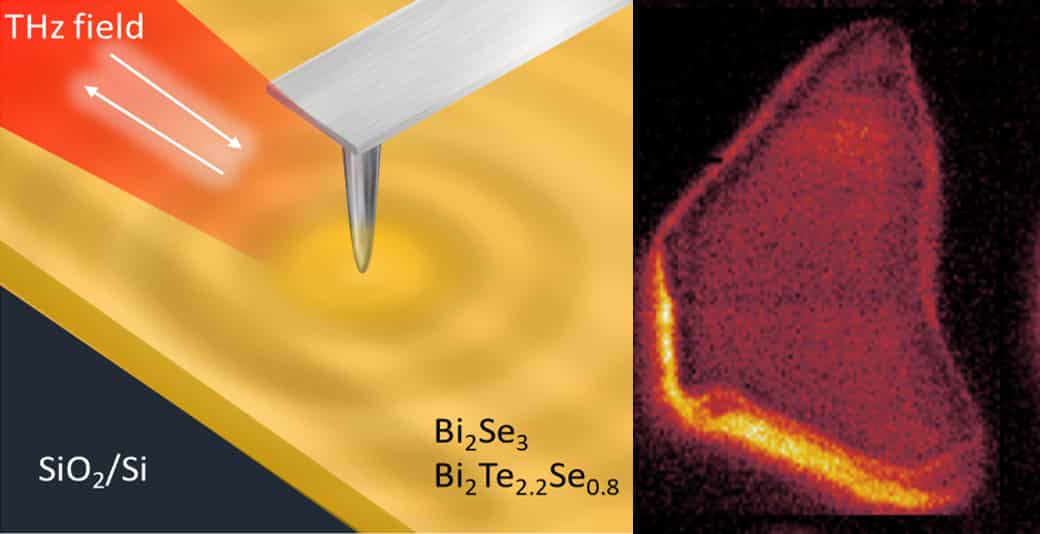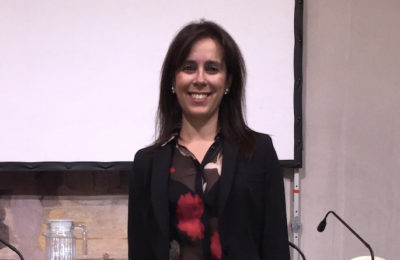Topological insulators are materials of great interest scientific and technological due to their optical and electronic properties. Furthermore, these materials are remarkable systems for studying a series of quantum phenomena originating from their their surface states, inaccessible to experimental observation until a few years ago. Now a study coordinated by Cnr Nano reports the first experimental observation of two types of collective light-matter excitations in the far-infrared frequencies in two distinctive topological insulating materials, thanks to the technique of near-field nanoscopy, at terahertz frequencies. The results are published in the journal Nature Communications.
According to Miriam Serena Vitiello of the NEST laboratory of Cnr Nano and Scuola Normale Superiore, who coordinated the team of researchers which includes Eva Arianna Pogna and Leonardo Viti (Cnr Nano), staff from the University and Polytechnic of Bari (Gaetano Scamarcio, Massimo Brambilla) and from the University of L’Aquila (Antonio Politano), the study “opens up new perspectives both for the physics of matter, giving access to hitherto unexplored regimes of strong light-matter interaction, and for technological development, for example in the field of optoelectronics for the manipulation, transmission and detection of light in the far infrared range by means of nanodevices”.
Topological insulators are semiconductor materials that, in their surface layers, exhibit metallic behavior with unique conductive properties in their surface layers. “Moreover these materials when are irradiated with far infrared radiation can give rise to collective light-matter excitations known as hyperbolic phonons-polaritons”, explains Vitiello. “The study of hyperbolic phonon-polaritons has so far been limited to other materials, such as boron nitrate or molybdenum trioxide, capable of coupling to light with frequencies that only reach the near infrared. The topological insulators that we have studied present hyperbolic modes in the far infrared, allowing us to extend the application of hyperbolic phonons-polaritons to a new spectral range”.
To study the optical response of such innovative materials the team of researchers used a near-field microscopy setup operating in the far infrared based on quantum cascade laser sources and a time-resolved spectroscopy system, developed at Cnr Nano. The quantum cascade laser sources were manufactured within the institute.
In the first material studied, bismuth selenide, the researchers observed for the first time the activation of hyperbolic phonons-polaritons in the far infrared range and investigated how they are modified by the interaction with electrons belonging to the surface states of the topological insulator. In the second material, a compound of bismuth tellurium and selenium (Bi2Te2.2Se0.8), the researchers observed the activation of plasmon-polaritons in the far infrared, generated by the coupling of electromagnetic radiation with the plasmon of the material, or collective oscillations of its charge carriers.
“Near-field microscopy provides an intriguing playground to study novel quantum states of matter at the nanoscale. In particular, our near-field microscopy measurements in the far infrared combine extensive spectral coverage with a spatial resolution of tens of nanometers, allowing us to to map the propagation in space of collective light-matter excitations in samples of topological insulators of micrometric dimensions “, concludes the researcher.
Pogna, E.A.A., Viti, L., Politano, A. et al. Mapping propagation of collective modes in Bi2Se3 and Bi2Te2.2Se0.8 topological insulators by near-field terahertz nanoscopy. Nat Commun 12, 6672 (2021). https://doi.org/10.1038/s41467-021-26831-6
[IMAGE. left: schematics of a near field detectorsless terahertz nano imaging of a topological insulator slab deposited on a silicon substrate; right: near field image of a thin flake of BiSeTe]



